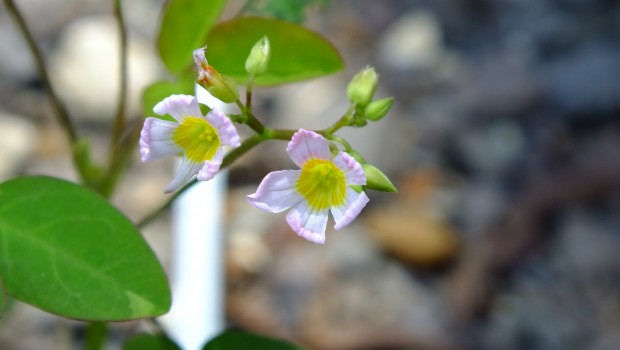Oxalidaceae
By donating to PFAF, you can help support and expand our activities
Plant Suppliers: Click here for a List
Oxalis barrelieri – L.
Common Name
Family Oxalidaceae
Synonyms
Known Hazards The leaves contain oxalic acid, which gives them their sharp flavour. Perfectly all right in small quantities, the leaves should not be eaten in large amounts since oxalic acid can bind up the body’s supply of calcium leading to nutritional deficiency. The quantity of oxalic acid will be reduced if the leaves are cooked. People with a tendency to rheumatism, arthritis, gout, kidney stones or hyperacidity should take especial caution if including this plant in their diet since it can aggravate their condition[238].
Habitats Not known
Range Southern S. America.
Edibility Rating
Medicinal Rating
Care
Well drained soil Moist Soil Full sun
Summary
Physical Characteristics
Oxalis barrelieri is a PERENNIAL. The flowers are hermaphrodite (have both male and female organs) and are pollinated by Insects.
Suitable for: light (sandy) and medium (loamy) soils and prefers well-drained soil. Suitable pH: acid, neutral and basic (alkaline) soils. It cannot grow in the shade. It prefers dry or moist soil.
Oxalis barrelieri
www.flickr.com/photos/wildsingapore
Oxalis barre
Habitats
Cultivated Beds;
Edible Uses
Edible Parts: Leaves.
Edible Uses:
Leaves – raw or cooked[177]. An acid flavour[2]. Use in moderation, see notes at top of sheet,
Medicinal Uses
Plants For A Future can not take any responsibility for any adverse effects from the use of plants. Always seek advice from a professional before using a plant medicinally.
None known
Other Uses
None known
Cultivation details
We have almost no information on this species and do not know if it will be hardy in this country. The following notes are based on the general needs of the genus. Easily grown in a sandy soil in a warm dry position.
Propagation
Seed – best sown as soon as ripe in a cold frame. Prick out the seedlings into individual pots when they are large enough to handle and plant them out in late spring or early summer. Division in spring. Larger divisions can be planted out direct into their permanent positions. We have found that it is better to pot up the smaller divisions and grow them on in light shade in a cold frame until they are well established before planting them out in late spring or early summer.
Plant Suppliers: Click here for a List
ข้อมูล : Plants For a Future















